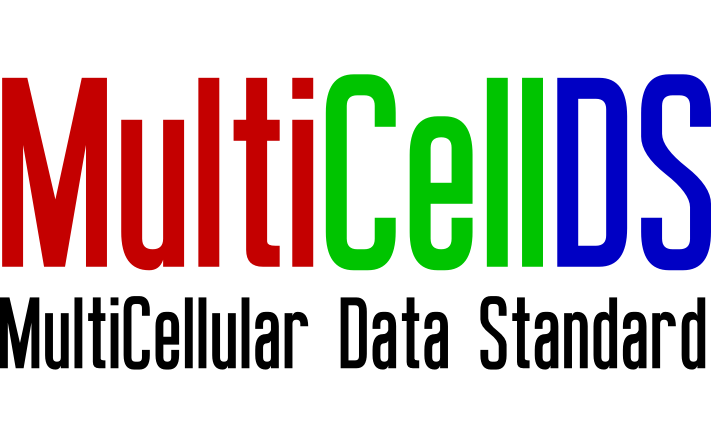Software
Core software
The following API software is used to work with MultiCellDS files. Currently, C++ and Python are supported.
- libMultiCellDS:
- Code to read/write MultiCellDS files (version 1.0.0 or later), in C++ or Python.
Author/maintainer: Samuel Friedman
Project site: http://MultiCellDS.org
Download: https://gitlab.com/MultiCellDS/MultiCellDS
Third-party software
The following third-party software packages support MultiCellDS data. Software using the official MultiCellDS APIs (marked as API) are most likely to maintain standards compliance.
Simulation software
- Chaste
- Chaste is a general purpose agent-based modeling framework.
Project site: http://www.cs.ox.ac.uk/chaste/
Status: Beta testing a post-processing "converter" to transform Chaste simulation outputs to MultiCellXML, using the MultiCellDS C++ API. - BioFVM
- BioFVM is an open source multi-substrate diffusion solver.
Author/maintainer: Paul Macklin
Project site: http://BioFVM.MathCancer.org
Status: BioFVM natively writes MultiCellXML output files. Read support is planned. - PhysiCell
- PhysiCell is an open source 3-D agent-based simulator, suitable for simulating
millions of cells on desktop workstations.
Author/maintainer: Paul Macklin
Project site: http://PhysiCell.MathCancer.org
Status: Native write support is in beta testing. Read support is planned. PhysiCell's internal data structures are very similar to phenotype datasets and digital cell lines. - CellSys
- CellSys (not the one at Seville) is a 3-D simulation package for 2-D monolayers and 3-D spheroids.
Author/maintainer: Stefan Hoehme
Project site: http://www.hoehme.com/software/9-software/9-tisim
Status: Native write support is in beta testing, using the MultiCellDS API. - Tissue Simulation Toolkit (TST)
- Tissue Simulation Toolkit is a cellular Potts modeling framework for simulating tissues.
Author/maintainer: Roeland Merks
Project site: https://sourceforge.net/projects/tst/
Status: Full read and write support via the API have been implemented, with a release planned soon.
Image analysis
Software plugins for ImageJ are planned for release in 2017. This software will perform image segmentation and output MultiCellDS digital snapshots.
Data analysis
- CellPD
- CellPD (cell phenotype digitizer) is a user-friendly tool to convert
cell count data into MultiCellDS digital cell lines, publication-quality plots,
and fitted mathematical models.
Author/maintainer: Edwin Juarez
Project site: http://CellPD.MathCancer.org
Status: Native write support for digital cell lines.
Visualization and/or exploration
A talented team of undergraduate students at the University of Louisville, lead by
Hermann Frieboes, developed a first 3-D data visualization and exploration tool.
Further documentation is in the works, but Python code can be found at:
https://gitlab.com/MultiCellDS/visualization/tree/master
Parameter Identification
- NCI Handbook Entry: Parameter Identification
- This tutorial paper by Edwin Juarez uses Matlab to identify cell birth and death
parameters, using synthetic flow cytometry data.
Reference: http://biorxiv.org/content/early/2015/12/31/035766
Download: http://mathcancer.org/NCI_handbook_parameters/
 MultiCellular Data Standard Project
MultiCellular Data Standard Project